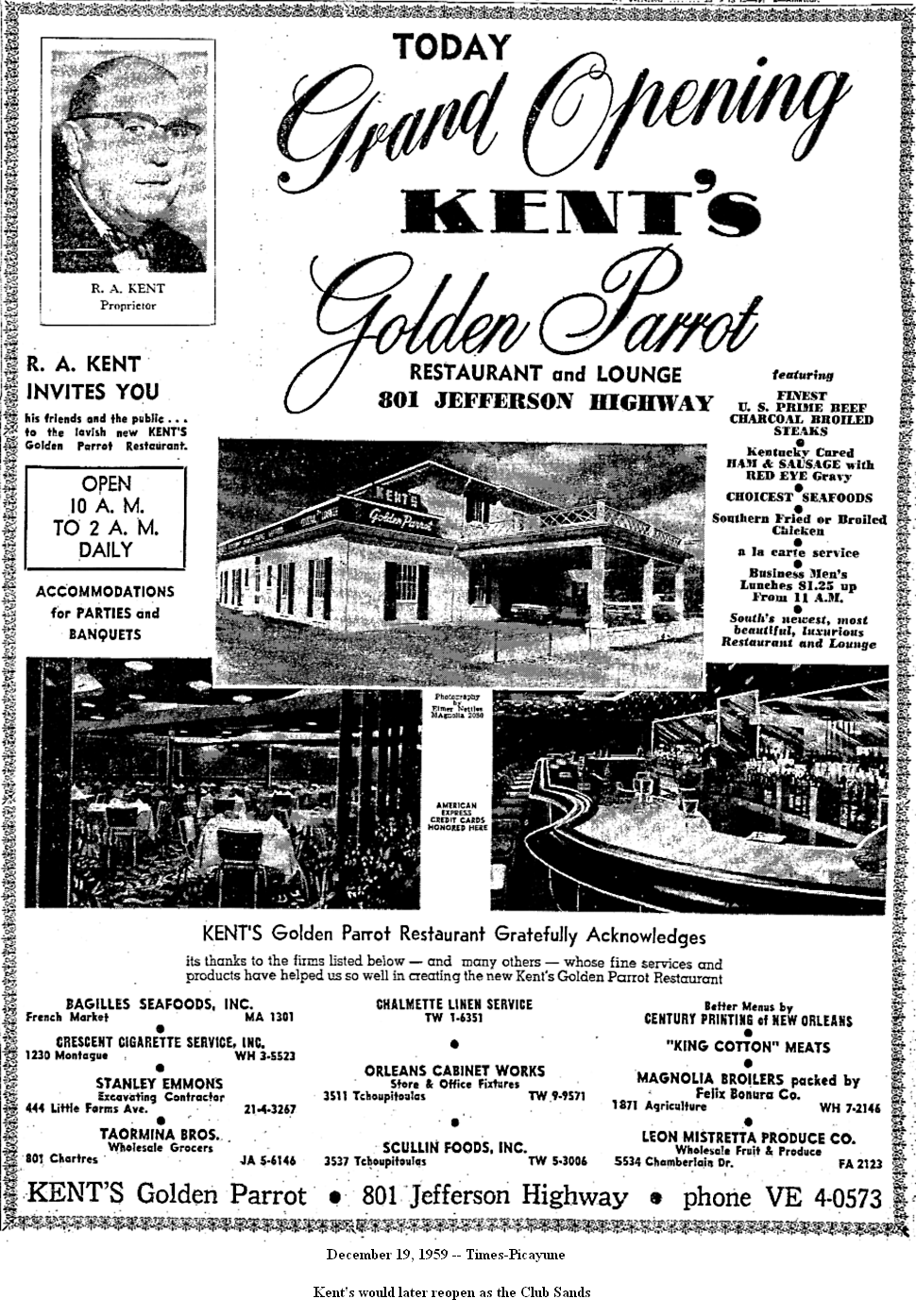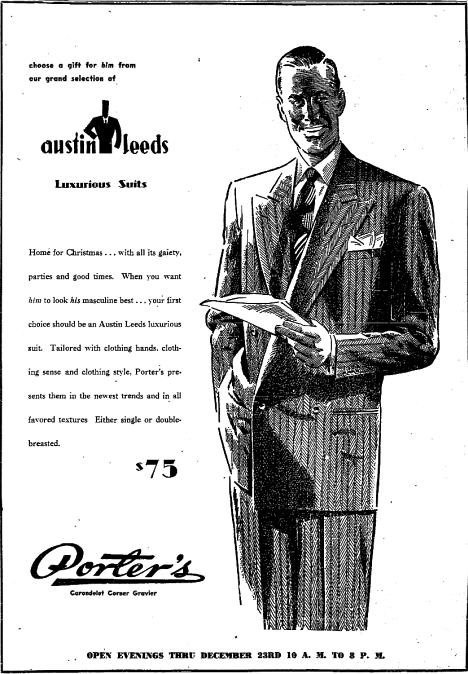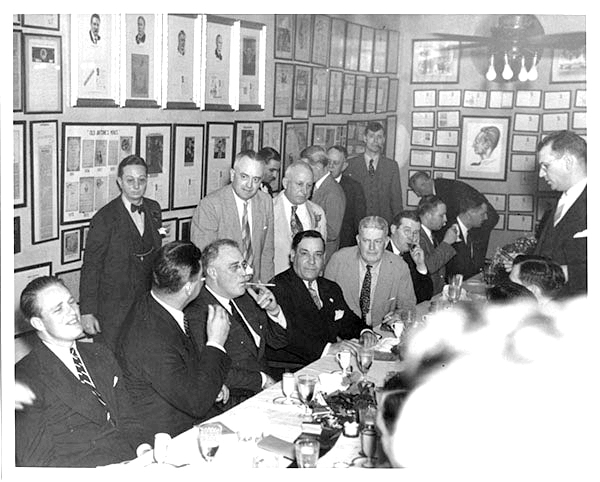|
Today in New Orleans History |
|
|
December 19




Professor Longhair was born on December 19, 1918 in Bogalusa, Louisiana.
He made a living as a street hustler until he started to play piano seriously in his thirties. He taught himself how
to play on a piano with missing keys so his style became distinct. He began his career in New Orleans in 1948, earning a
gig at the Caldonia Club where the owner, Mike Tessitore, bestowed Longhair with his stage name (due to Byrd's shaggy coiffure).
Longhair first recorded in 1949, creating four songs (including the first version of his signature song, "Mardi Gras
in New Orleans," complete with whistled intro) for the Dallas, Texas based Star Talent
label. His band was called the Shuffling Hungarians, for reasons lost to time. Union problems
curtailed their release, but Longhair's next effort for Mercury Records the same year was a winner. Throughout the 1950s,
he recorded for Atlantic Records, Federal Records and other, local, labels. Professor Longhair had only one national commercial
hit, "Bald Head" in 1950, credited to Roy Byrd & His Blues Jumpers. He also recorded his pet numbers "Tipitina"
and "Go to the Mardi Gras". He died on January 30, 1980.
Because of the large influx of nonresidents in the French Quarter, New Orleans’ first transportation
system was started. The fare in 1832 was 12 1/2 cents. The service began with two small, horse-drawn vehicles. The line
ran from Canal to Chartres, down Chartres to Jackson Square, then to the cotton presses on Levee Street. From there it went
to the Pontchartrain Railroad depot, located near the river on Elysian Fields Avenue. In a very short time, the service
was overloaded, due to the vehicles’ limited carrying capacity. The Louisiana Advertiser newspaper ran an article
stating that two small omnibuses were to be replaced by new vehicles, built by Messrs. Carter of New York, arrived in New
Orleans and were hastily put into service on December 19, 1832. The name given the two were “Cotton
Plant” and “Tobacco Plant.” Each carried 14 passengers, comfortably seated, and they were each pulled
by four horses. Service began at 7 a.m. and stopped at 7:30 p.m. As an additional service to their customers, the omnibuses
also carried letter boxes. For the comfort of its female passengers, a sign in each carriage requested that gentlemen not
smoke. Source: Buddy Stall at http://clarionherald.org/20010927/stall.htm This would become the Pontchartrain Railroad.
Andrew Jackson arrived in New Orleans on December 1, 1814 to discover that the city had not
created any defenses. It had approximately 1,000 unseasoned troops and two ships for its use. Although the city kept control
of the eight ships taken from Lafitte, it did not have enough sailors to man them for defense. Resentful of the raid on
Barataria, Lafitte's men refused to serve on their former ships. In mid-December, Jackson met with Lafitte, who offered to
serve if the US would pardon those of his men who agreed to defend the city. Jackson agreed to do so. On December
19, the state legislature passed a resolution recommending a full pardon for all of the former residents at Barataria.
With Lafitte's encouragement, many of his men joined the New Orleans militia or as sailors to man the ships. Others formed
three artillery companies Civil engineer Benjamin Henry Latrobe II, born on December 19,
1806, was the son of Benjamin Latrobe, architect of the United States Capitol and
the Basilica of the Assumption. Around 1820, he worked with his father to establish a water supply for New
Orleans. He died on October 19, 1878. Antoine's Roy Louis Alciatore is Born Restaurateur Roy Louis Alciatore, born in New Orleans on
December 19, 1902, was the son of Jules Louis Alciatore and Marie Althea Roy, and a grandson of Antoine Alciatore,
who founded Antoine's Restaurant in 1840 (he formerly operated Pension Alciatore in the French Quarter). Roy attended Tulane
University and married Mary Pearl Duggan. They had one daughter, Yvonne Elaine. |
|
|

To receive an update for each day in New Orleans history,
join our facebook page - Today in New
Orleans History.
Analytics |




 Pictured: Franklin Delano Roosevelt enjoys a post-luncheon smoke at Antoine's using his well-known cigarette holder. The
man in the bow tie behind the President is Roy Alciatore, the proprietor of Antoine's. Photograph by Earl S. Martin. [E. S.
Martin Photograph Collection] President Franklin Delano Roosevelt visited the Crescent City on April 29, 1937.
He came to dedicate the Roosevelt Mall in City Park near the city's new municipal stadium, then under construction . The mall
and the stadium, along with other improvements to the Park, were projects of the Works Progress Administration (WPA), one
of the keystones of FDR's New Deal. The President arrived in New Orleans by train following a journey from Washington through
Atlanta and on to the Alabama and Mississippi Gulf Coast. Also pictured are Governor Richard Leche (on Roosevelt's right)
and Mayor Robert S. Maistri (left of the presidient). At this luncheon, Maistri allegedly asked "How ya like dem
erstuhs, Mister President?" Photo from the New Orleans Public Library.
Pictured: Franklin Delano Roosevelt enjoys a post-luncheon smoke at Antoine's using his well-known cigarette holder. The
man in the bow tie behind the President is Roy Alciatore, the proprietor of Antoine's. Photograph by Earl S. Martin. [E. S.
Martin Photograph Collection] President Franklin Delano Roosevelt visited the Crescent City on April 29, 1937.
He came to dedicate the Roosevelt Mall in City Park near the city's new municipal stadium, then under construction . The mall
and the stadium, along with other improvements to the Park, were projects of the Works Progress Administration (WPA), one
of the keystones of FDR's New Deal. The President arrived in New Orleans by train following a journey from Washington through
Atlanta and on to the Alabama and Mississippi Gulf Coast. Also pictured are Governor Richard Leche (on Roosevelt's right)
and Mayor Robert S. Maistri (left of the presidient). At this luncheon, Maistri allegedly asked "How ya like dem
erstuhs, Mister President?" Photo from the New Orleans Public Library. 
